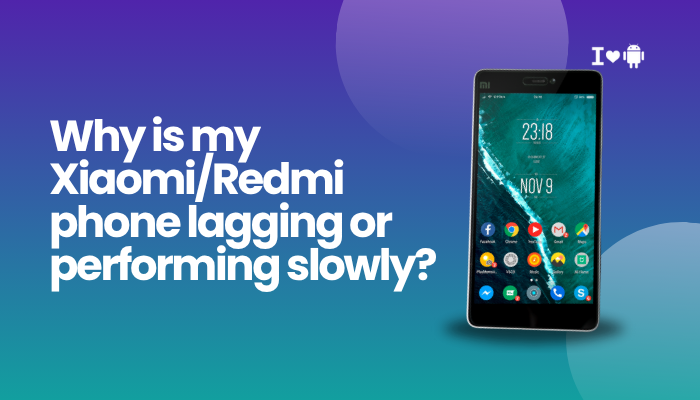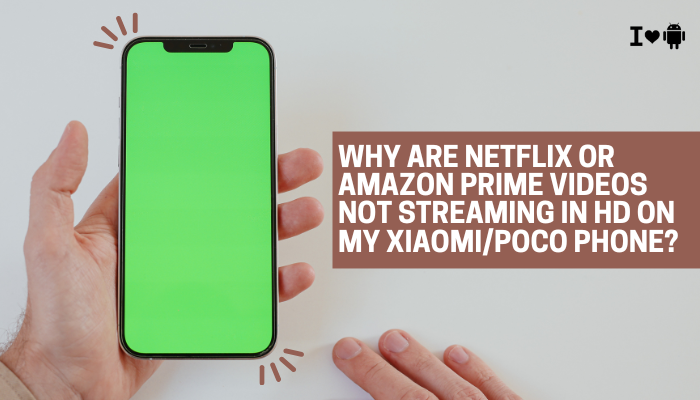Introduction
A smooth, responsive interface is vital for smartphone enjoyment. Yet Xiaomi and Redmi devices—despite powerful chipsets—sometimes feel sluggish, with stutters scrolling, app load delays, or UI freezes. MIUI’s rich feature set, aggressive background optimizations, and layered customizations can inadvertently sacrifice fluidity.

MIUI Background Processes and Cache Bloat
How MIUI Caches Slow You Down
MIUI aggressively caches app data to speed launches, but over time these caches accumulate stale or corrupted files, bloating storage and slowing I/O operations.
Fix
- Clear App Caches
- Open Settings → Storage → Cached data, tap Clear.
- Or for individual apps: Settings → Apps → Manage apps → [App] → Storage → Clear cache.
- Use Security App Cleaner
- Launch Security → Cleaner, scan and clean junk files and residual caches.
- Reboot
- After cleaning, restart to flush system memory.
Too Many Locked or Background Apps
RAM Pressure from Locked Apps
“Locking” apps in Recents preserves them in RAM but prevents MIUI’s memory manager from reclaiming resources, leading to overall RAM pressure and swapping.
Fix
- Unlock Unnecessary Apps
- Go to Recent apps, swipe down to unlock those you seldom use.
- Close Heavy Background Tasks
- Long-press Home, choose RAM (if available), and clear apps.
- Limit Autostart
- Settings → Permissions → Autostart, disable for non-critical apps.
Excessive or Heavy Animations
GPU Load from Fancy Transitions
MIUI’s transition animations and effects (e.g., Live Wallpapers, system animations) can overload the GPU, causing frame drops.
Fix
- Reduce Animation Scales
- Enable Developer options (Settings → About phone → tap Build number 7×).
- In Developer options, set Window animation scale, Transition animation scale, Animator duration scale to 0.5× or Off.
- Use Static Wallpapers
- Avoid live or video wallpapers.
- Disable Special Effects
- In Security or Settings → Special features, turn off Floating windows and other visual enhancements.
Outdated MIUI or Security Patches
Performance Fixes in Updates
Xiaomi regularly optimizes memory handling, graphics drivers, and background task policies in MIUI updates. Running an old build can miss these improvements.
Fix
- Check for System Updates
- Settings → About phone → MIUI version → Check for updates, download and install.
- Apply Patch Quickly
- Security patches often include performance enhancements.
- Reboot Post-Update
- Ensure new kernels and drivers load properly.
Thermal Throttling Under Load
Heat-Induced Frequency Downscaling
Prolonged gaming, video recording, or charging heats the SoC. To protect hardware, Xiaomi throttles CPU/GPU clocks, causing a sudden drop in responsiveness.
Fix
- Monitor Temperature
- Use apps like CPU-Z to check real-time SoC temps.
- Pause Intensive Tasks
- After 15–20 minutes of gaming, take breaks to cool.
- Charge in Cool Areas
- Remove case and place on a flat, ventilated surface.
- Enable Performance Mode Sparingly
- Settings → About phone → All specs → Performance mode, use only for short bursts.
Storage Nearly Full or Sluggish
Slow I/O When Storage Is Crowded
When internal storage dips below 10%, Android’s file allocation slows down, impacting app launches, installs, and system writes.
Fix
- Free Up Space
- Settings → Storage: Delete unused apps, large videos, and redundant files.
- Move Media to SD Card (if supported)
- Transfer photos/videos via Files.
- Adoptable Storage
- On supported MIUI versions, format SD card as internal storage to expand capacity.
Rogue or Resource-Hungry Apps
Background CPU Spikes
Some apps—especially poorly coded or ad-heavy ones—consume excessive CPU or keep wakelocks, draining performance.
Fix
- Identify Culprits
- Settings → Battery & performance → App battery saver → Battery usage details. Look for apps using >5% CPU when idle.
- Force Stop or Uninstall
- Remove or restrict these apps under Settings → Apps → Manage apps → [App] → Restrict.
- Replace with Lightweight Alternatives
- Choose well-optimized apps (e.g., Simple Gallery vs. heavy gallery apps).
Excessive Widgets and Live Feeds
Constant Updates from Widgets
Live widgets (weather, news, social feeds) poll servers frequently, waking the CPU and network stacks, leading to intermittent stutters.
Fix
- Remove Non-Essential Widgets
- Long-press and delete widgets you rarely use.
- Limit Refresh Intervals
- In widget settings, set longer update periods (e.g., 30 minutes vs. 5).
- Use Swipe-Down Notification for Info
- Rely on pull-down status bar for quick info-look instead of widgets.
Unoptimized Third-Party Launchers or Themes
Compatibility Issues with MIUI
Custom launchers or themes not designed for MIUI can conflict with system animations, cause memory leaks, or disable optimizations.
Fix
- Switch to MIUI’s Built-In Launcher
- If you’re using Nova or another, test performance with the stock launcher.
- Use Official Themes
- In Themes app, choose Xiaomi-approved themes to maintain optimization.
- Clear Launcher Cache
- Settings → Apps → Manage apps → [Launcher] → Clear cache & data.
Developer Options and Debugging Overhead
Debugging Services Can Slow UI
Enabling extensive developer settings—USB debugging, strict mode, background process limits—can degrade performance.
Fix
- Disable Unneeded Developer Options
- Settings → Additional settings → Developer options → toggle off.
- Reset Background Process Limit
- In Developer options, ensure Background process limit is set to Standard.
- Turn Off Debug Overlays
- Disable Show CPU usage, Profile GPU rendering if enabled.
Best Practices for Sustained Performance
- Regular Reboots: Weekly restarts clear hung services.
- Keep MIUI Updated: Install stable builds promptly.
- Balanced App Set: Uninstall unused apps; avoid heavy multitasking.
- Monitor Temperatures: Pause during thermal throttling incidents.
- Storage Maintenance: Keep free space above 15%.
Conclusion
Lag on Xiaomi and Redmi phones arises from a mix of MIUI’s caching, background processes, animation loads, thermal throttling, storage constraints, and rogue apps. By following the ten fixes—clearing caches, managing autostart, reducing animations, keeping software updated, freeing storage, identifying resource hogs, and optimizing settings—you’ll restore the smooth, responsive experience you expect.
Adopt the best practices to maintain performance long-term, and enjoy your Xiaomi device at peak speed without resorting to a full factory reset.

